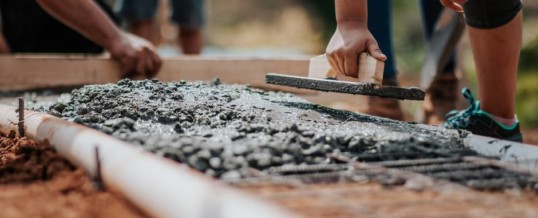
Nearly 98% of basements experience water damage at some point.
This proves we must be cautious about foundation leaks and know how to spot them before they cause further damage.
If you’re unsure about foundation leak signs, you’ve come to the right place. Here’s everything you need to know.
Signs of Foundation Leaks
Before we jump into how to fix foundation leaks, it’s important to know the signs so you can take immediate action. The following are symptoms of a foundation leak.
Check these out, for example:
Check the Track Strip
A telltale sign of a foundation water leak is rust or rot on your carpet tack strip. To check, pull the carpet away from the wall and inspect the strip for discoloration.
This also shows you the amount of water that’s come through the foundation.
Try a Water Test
Sometimes there aren’t clear cracks so it’s difficult to pinpoint the source of the foundation leak. Luckily, you can test this using your garden hose.
To do this, spray water on the outside of the foundation and see if water seeps into the interior. It’ll take a few minutes for water to appear so be patient.
If you see water, hire a foundation expert to find the leak and correct the issue accordingly.
Look Out for Efflorescence
You’ll need foundation leak repair if efflorescence appears on the wall. Efflorescence is a powdery white substance created when water evaporates and leaves behind traces of salt.
Efflorescence shows the spot where the pipe is leaking so you know where the problem lies.
Check For Perimeter Leaks
An inadequate draining system can create perimeter leaks in your foundation which is tricky to repair. These appear where the floor meets the wall, leaving behind water damage, mold, and mildew.
As soon as you notice this, act quickly otherwise the leak could destroy your entire home’s foundation.
There’s a Random Spike In Utility Bills
A major sign you have a leaking foundation is an unexplained increase in your utility bill. Foundation leaks continue even when your taps are off so check for dripping faucets and potential pipe leaks.
In most cases, water collects beneath the foundation which could cause severe damage to your home.
Check for Damp Floors
There may not be obvious leaks so monitor the plumbing system for small holes or cracks. Checking the water pressure is the best way to see if pipe leakage is the culprit.
Test every faucet, one at a time, and if the water stream is weak, it’s likely a plumbing leak. When you find the location where water comes out at a lower pressure, check the connecting pipes and press down on a dry cloth to find the leaking spot.
Symptoms of pipe leakage include damp carpets as the water seeps into the walls and collects where the leak is. You should also look for warm spots around the house by walking barefoot.
Mark an area that’s unusually warm and check the next day to see if persists. If it does, you have a leaking hot water pipe that needs attention immediately.
Look Out for Mold or Mildew
Mold and mildew flourish in warm, wet environments so look out for its smell which is a musty odor.
Leaking foundations seep into your walls and carpet, often resulting in a mold outbreak. If there’s pooling or standing water because of a foundation leak, it’ll also wreck your home floors.
How to Fix Foundation Leaks
Now we’ve covered signs of a foundation leak, it’s time to discuss the solutions. Hiring a professional is the best option as they have the experience and expertise to deal with foundation leaks. Plus, DIY jobs often result in further damage.
But here are the main ways to solve this problem, for instance:
Insulate Pipes
Once you’ve diagnosed the problem, consider insulating the pipes. Cold pipes create condensation which can result in basement water problems.
To combat this, cover them with foam pipe insulation.
Waterproof Basement Walls
A surefire way to eliminate any foundation leaks is by waterproofing your basement walls. Waterproofing materials fill pores in the walls to stop water from leaking in.
Because this is a complex job, hire a professional as they know the procedure, and have the right materials.
Install a Drainage System
Another fix for a leaky foundation is installing a drainage system beneath the basement floor. The system is linked to a pump and sump basket so excess water runs away from your house and isn’t absorbed by your home’s foundation.
It’s a potential DIY job but you must shatter the layer of concrete, bury the tubing, and re-patch the floor which is difficult.
Add Gutters and Downspout Extenders
Gutters and downspout extenders are crucial if your basement leaks after it rains. They both collect rain and channel it away from your home so you don’t have any foundation problems.
It’s important the downspouts have five-feet horizontal extensions so they do an effective job.
That’s Everything About Foundation Leaks
Hopefully, you’ve found this post on spotting and dealing with foundation leaks useful.
There are many telltale signs and if you have several of these, take immediate action to prevent additional damage. It’s important to contact a professional so they can evaluate your foundation leak and find the best solution. Good luck!
If you need an inspection or basement waterproofing, we’re here to help. Contact us here for more information.
ShareSEP
